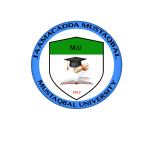Bachelor of Banking and Finance
The banking, credit and finance field encompasses the storing and protecting of money, the creating and maintaining of wealth, and the receiving, distributing and overall managing of money that is crucial to the success of every business. Very broad areas, banking, credit and finance professionals can be found in every industry helping businesses as well as individuals. People entering these fields have to be knowledgeable of methods of deposit and withdrawals, loans, interest rates, budgets and financing, stocks, bonds, credits, investments, monetary systems, and financial institutions.
Course Competencies
Students graduating from the Bachelor of Banking and Financial Services will be able to:
• Establish broad and coherent knowledge of the theoretical and professional disciplines of banking, finance, investment analysis, portfolio management, accountancy, economics, quantitative methods, law, and the Financial Services Industry.
• Exercise informed commercial judgement within a professional setting which emphasis’s ethical and responsible decision making.
• A capacity to integrate technical and conceptual knowledge, and interpersonal skills to work effectively within the Financial Services Industry.
• Acquire and synthesize information within a complex professional setting.
• Think and analyze critically and creatively to identify better solutions within business constraints.
• Work collaboratively with others to solve applied problems in baking & finance.
• Communicate and explain specialized technical advice, knowledge and ideas, to professionals and non-experts involved with the Financial Services Industry.
• Reflect upon work practices, conceptual frameworks and performance feedback and action ongoing professional development.
Program Duration
This is a four-year program. Every academic year consists of two 24-week semesters of theories and practical attachment as dictated by the course curriculum.
Admission Requirements
Admission criteria in MU training programmes have far-reaching implications in education and training processes and the outcomes of such programmes, thus, the graduate’s competency and the quality of services.
Candidates for direct or in-service admission into the course programme must possess the stipulated qualification requirements in Somalia, and the equivalent, especially in neighboring countries.
Any student seeking admission from any MU Department willing to pursue the course should fulfill the following requirements:
1. Be not younger than 18 years of age.
2. Submit secondary leaving certificate with minimum average marks of not less than 60% from recognized school and umbrella and passed the Somali Government centralized exam.
3. Application for admission.
4. Pay the registration and enrolment fees as per required.
5. Fill the application form fittingly.
6. Successfully pass the university entrance examination,
7. Bring the following documents with you:-
a. Original secondary certificate (both from the school & the government)
b. Original national identity card/passport/birth certificate
c. Two (2) certified clear sets of photocopies of (a) and (b)
d. Seven (7) certified passport sized photos
Assessment Approaches
Formative
Formative assessment is used as a bridge between learning and teaching. It allows instructors to gather real data about students as they work, then adjust their instruction to better serve students at their current learning level. In modern education, formative assessment has been proven to be highly effective not only for student learning, but for faculty teaching and, as a result, increases the overall quality of learning. Formative assessment used in the department include; Continuous Assessment Tests, Assignments, Quizzes, Random Assessment Tests, End of Semester Examinations and Supplementary Examinations.
Summative
The goal of summative assessment is to evaluate student learning at the end of an instructional unit/module. Summative assessment include; Final Qualifying Examinations (theory), Final Qualifying Examinations (theory and practical), End of Semester Examinations, and Promotional Examinations.
Teaching strategies
Teaching approach is a set of principles, beliefs, or ideas about the nature of learning which is translated into the classroom while teaching strategy is a long term plan of action designed to achieve a particular goal. These include the following; Informal Lectures/Discussions, Modified Lectures, Group Discussion, Small Group Discussions, Integrating Technology, Cooperative Learning, Demonstrations and return demonstration, Role plays, Team Teaching, Project Assignments, Case Presentations, Self-Directed Learning, Programmed Learning, Simulations, Educational Trips, Film Shows and Problem Based Learning.
Teaching Aids/Instructional Materials
The following teaching/instructional materials include the following; Chalk Board, White Board, Flip Chart , Flip Charts Stand, Posters, Poster Stand, Videos, Videos tapes, Video camera, Slides, Slide Projectors, Models of various body parts/organs, Study guides, Lesson plans, Course outlines, Computers, Laptops, LCD projectors, Over Head Projectors.
